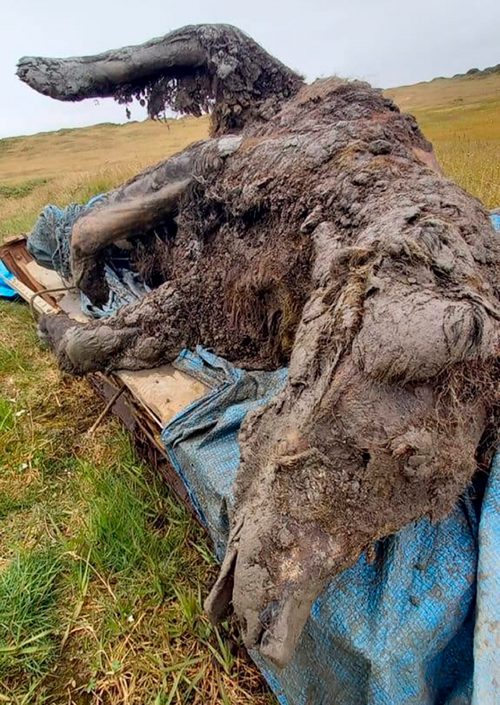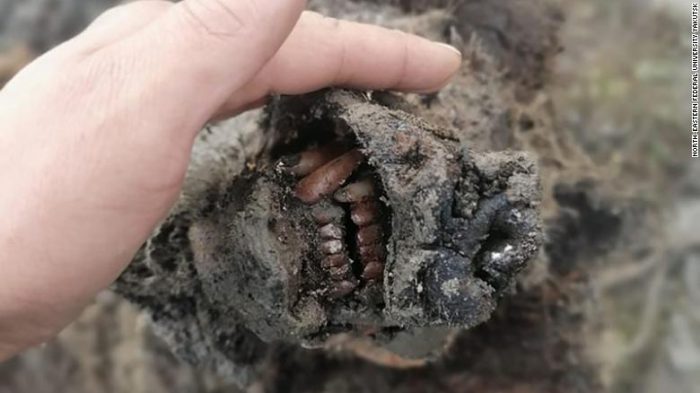As the Earth warms, one of the newest fields in palaeontology is thawing animal remains.
Okay, yuck. That does sound kind of gross. But it's true!
For many thousands of years in the Arctic, prehistoric animals that died and were quickly buried were almost perfectly preserved in what is called permafrost—that's ground that stays frozen all year round. But now that a lot of permafrost is well, defrosting, it is releasing many of these specimens from their icy traps.
The latest example is truly spectacular: an entire 30,000 year-old adult cave bear discovered by reindeer herders on the Lyakhovsky Islands in northern Siberia. Wow!
Big bear
A skeleton of an extinct cave bear. (Getty Embed)
Cave bears were distant relatives of brown bears. They lived during the Ice Age, alongside woolly mammoths, woolly rhinos, and giant sloths. They are one of the largest species of bears to have ever existed, weighing about 1,000 kilograms (1 ton!).
But what's even more impressive than its size is how well preserved this specimen is. Scientists from the North-Eastern Federal University (NEFU) in Yakutsk, Russia have been blown away by this discovery.
"Today this is the first and only find of its kind," said NEFU researcher Lena Grigorieva in a statement, "a whole bear carcass with soft tissues. It is completely preserved, with all internal organs in place including even its nose."
This is a huge step up from previous specimens of cave bear, which were all incomplete fossilized skeletons. Though the exact date of the bear is to be determined, it is estimated to be between 22,000 and 39,500 years old. In either case, a long extinct mammal has been found in the condition of animal that died only last week.
New era of discovery?

Finding a complete specimen like this is a very rare event. But it might not be as rare anymore. (North-Eastern Federal University)
Of course, exciting discoveries like this are a double-edged sword. On one hand, palaeontologists are now regularly enjoying access to specimens they couldn't dream of only a couple decades ago. So are archeologists in places like Norway.
On the other hand, this is only happening because our entire planet is getting warmer.
For now, scientists are just doing their best to capture and learn from these finds. And it seems pretty clear that with warming temperatures, more specimens like this remarkable cave bear are on their way.
 This cave bear carcass is the first of its kind ever found. For delicate soft tissue like the nose to still be intact is incredible. (North-Eastern Federal University)
This cave bear carcass is the first of its kind ever found. For delicate soft tissue like the nose to still be intact is incredible. (North-Eastern Federal University)










That’s really cool!
Cool ❗ It is large ❗ 😯